
Ranunculus And Peonies Flowering
Hello friends,
Today I wanted to share with you some of the ranunculus and peony plants that flowered in the garden this November, bringing such wonderful colour into the garden after the daffodil and tulip flowers finished, but before the dahlias started flowering this summer.
First up are the ranunculus varieties that I grew from seed last autumn. I bought a bunch of imported seeds from Buds & Bloom, including the varieties French Amandine Purple Jean, Italian Rosa Chairo, Italian Rosa, Italian Pastello 1, Italian Pastello 2, and Italian Bianco Sfumato.
Ranunculus corms are almost impossible to import into New Zealand due to strict biosecurity laws, but seed stocks are much easier to get into the country, which is what Buds & Bloom did last summer this year. Ranunculus plants from seeds are pretty tricky to grow, but I managed to get some germinating in autumn, and then grew them up over the winter, before planting them into the ground very early this spring. It didn't take them very long to grow and begin flowering, and here are a few that I photographed.
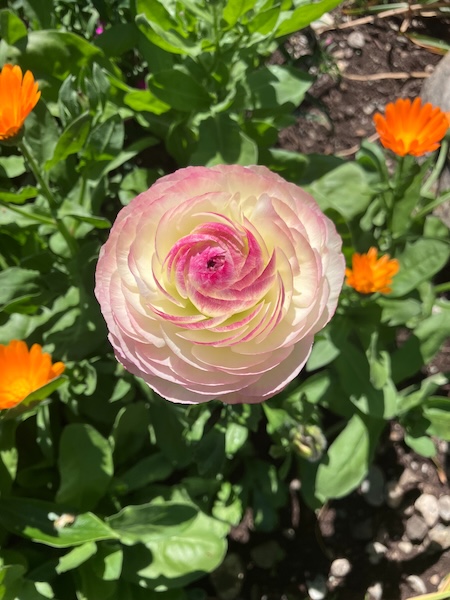

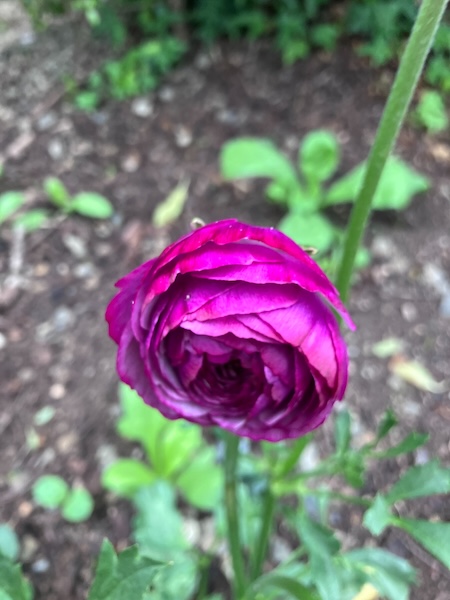





The range of colours from the imported ranunculus varieties was just stunning, with lots of pastel marshmallow like colours, and the flowers themselves were just very soft and squishy, perfect for cutting and then putting into a vase to enjoy inside the home.
Flowering at the same time were all my unknown peony varieties. Most of them were already in the garden when we moved here in 2019, and a couple of others are peonies that I bought but then have moved a couple of times over the years, and now I can't remember any of their names...
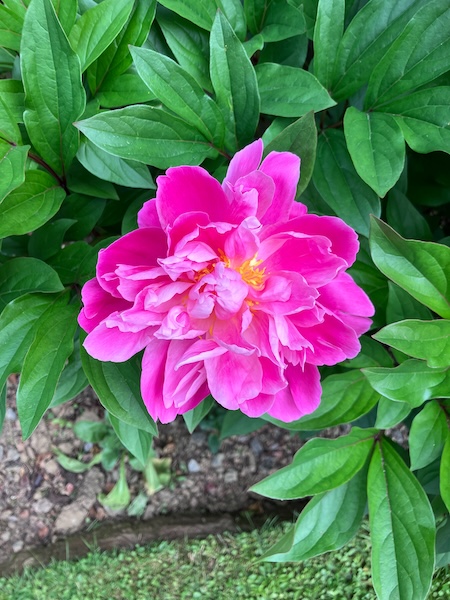

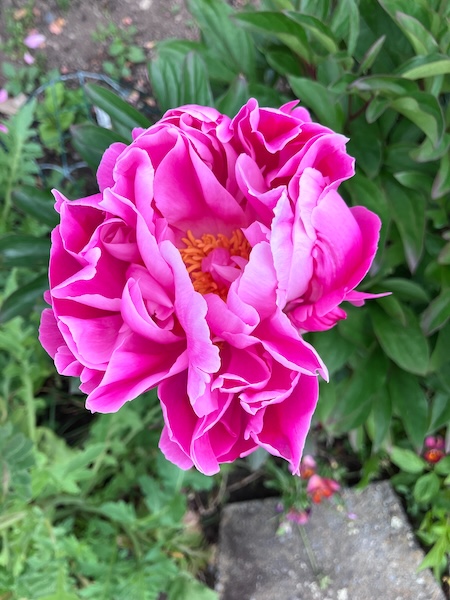
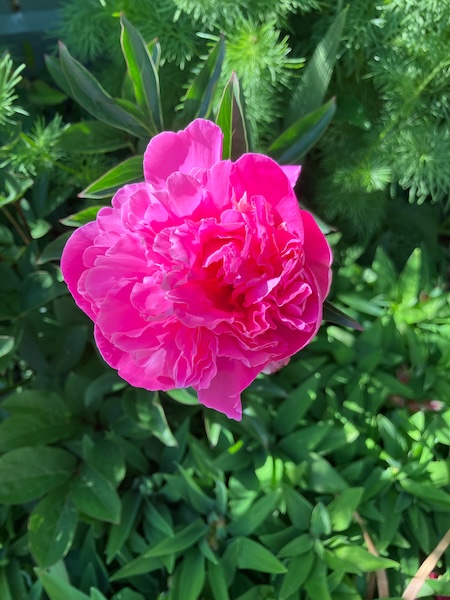
I leave them to flower in the garden rather than bringing them inside our home because hubby and my allergies are too severe to tolerate them, and also we have two very bitey indoor cats (Missy and Rosie) who would love to eat them if the blooms were brought inside.
I also have three new peonies growing this year, Duchesse de Nemours, Dr Alexander Fleming, and Sarah Bernhardt, but it will be a few years before they will be flowering and putting on a show in the garden. I can't wait to see them bud and bloom in a couple of years time...
Have a wonderful day
Julie-Ann
Want to discuss my post? Feel free to chat with me on Instagram or Mastodon or Bluesky, and now also Facebook.
Planting Out All The Garden Seedlings
Hello friends,
The last couple of weeks have been very busy in the garden, with the weather now being warm enough to plant all the seedlings, plants, and dahlias in pots, out into the garden. This was super important, as the glasshouse was completely packed with plants, and my tomato, cucumber, and chilli and capsicum seedlings really needed to get planted in their final positions in the glasshouse.

The first plants to go out into the garden were the dahlias I had in pots, and also all the dahlia seedlings I'd grown from seed, which I put into two of the new side garden beds.
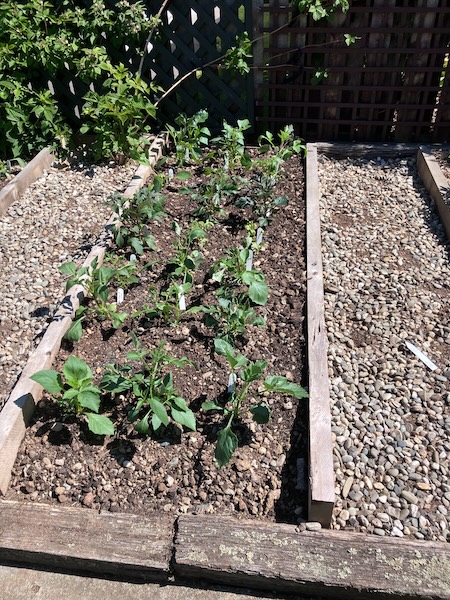
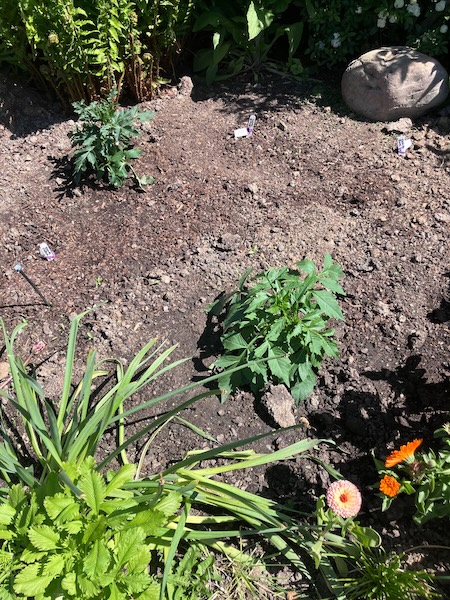

Next to plant out were all my natural dye plant seedlings into another new garden bed in the side garden, including tango cosmos, calendula, and Japanese indigo seedlings.


The vegetable garden beds also had to get weeded and dug over, so the corn, black turtle bean, lettuce, cabbage and bok choi seedlings could be planted into the garden.
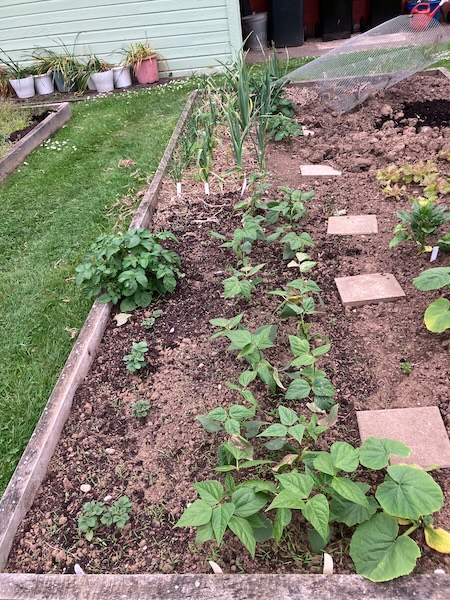
After that, it was time for all the flower seedlings including cosmos, calendula, and pansies, to be dotted around the garden areas to fill out
empty spaces I leave for annual plants. This took about a week as I was very enthusiastic in sowing seeds this spring.

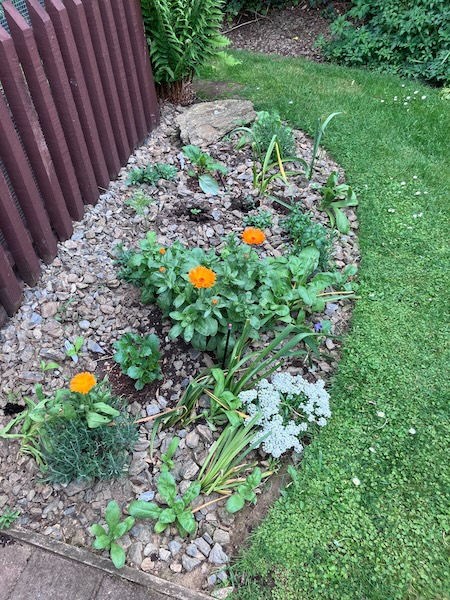
The last of my Floret zinnia seedlings (Unicorn, Precious Metals, and Dawn Creek Blush) went into two spare vegetable garden beds so they can self-pollinate with each other in blocks this growing season, to give me a stash of Floret seeds of my own for the coming years. There is no guarantee that Floret seeds will be imported into the country again any time soon, and I wanted to keep some seed stocks of these varieties for my garden.
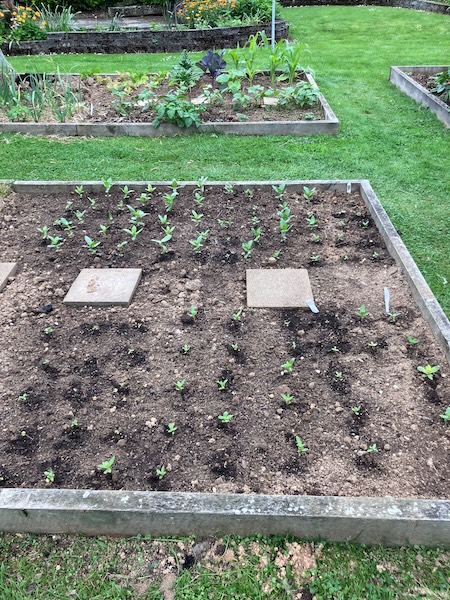
And finally once the glasshouse was all but empty it was time to add compost to the glasshouse, dig over the soil, and plant out all my tomatoes (Pomodoro, Juanne Flamme, Hera, Island Bay, Lebanese, Grosse Lisse), capsicum (Marconi Red, Candy Cane), chilli (Serrano), and cucumber (Mini Me, Crunchy, Medici) varieties, and erect their climbing frames. I had some leftover plants which were given to family members.

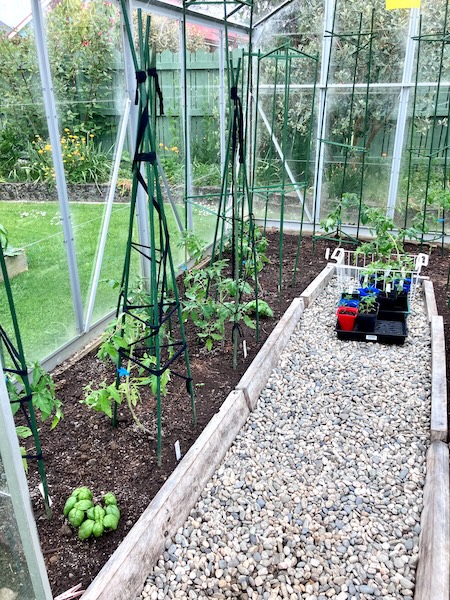
Once the bigger plants were in place, I planted out my basil plants (Genovese, Gustosa, Lettuce Leaf) into the empty spaces. With that all done I scattered fertiliser, added Saturaid to help with water retention, replaced the yellow sticky traps to catch plant pests, and gave the glass house a good watering.
There are two more vegetable garden beds to be weeded, have compost added, and dug over for planting, but they are for special projects that will be dealt with by the time you read this blog post.
It's been a lot of work to get to get my garden to this point, and I've been neglecting weeding the garden to do this, so that will be my next big gardening job leading into summer in a couple of weeks.
Have a wonderful day
Julie-Ann
Want to discuss my post? Feel free to chat with me on Instagram or Mastodon or Bluesky.
Dahlia Experiments 2025 - Growing Dahlia Seedlings
Hello friends,
As part of my dahlia growing experiments this year, one of my goals is to grow my own dahlia plants from seed. I have a stash of dahlia seed available, including the Bee's Choice dahlia variety from Floret in the USA (which I bought from Emerden last year), Beeline I and II dahlia seeds from the breeder Doctor Keith Hammett in New Zealand, dahlia seeds from Susie Ripley's garden in Dunedin, and also open pollinated seeds from my own garden.


At the end of August, once I was able to garden again after my second cataract surgery, I sowed my dahlia seeds into two covered seed trays, and sprinkled them with enough seed raising mix to cover them.


With them watered, and kept moist in the trays, the dahlia seeds stayed in our dining room in the warmth while they germinated. To my surprise, most of the dahlia seeds I planted germinated, at a rate of about 95%, which is way more dahlias than I expected to plant in my garden this year.


They grew nice and strong, and soon they were ready to transplant out into bigger pots with potting mix. They've been growing safe and sound in my glasshouse since then, growing bigger each week. My plan is to plant them in the garden after the last frost, but for now I have to figure out where I'm going to put 43 dahlia seedlings...

I can't wait to see what dahlia flowers appear from these seedlings over the summer. My plan is to be quite harsh with them, and I'll pull out any flowering plant that I'm not happy with, to give other dahlias room to grow. I'll give you updates as I go...
Have a wonderful day
Julie-Ann
Want to discuss my post? Feel free to chat with me on Instagram or Mastodon or Bluesky.
Harvesting My Own Sugar Beet Seeds
Hello friends,
Back in the Winter of 2024 I was perusing the Kings Seeds website looking for seed packets to buy for the upcoming spring season. One of the packets I was looking to purchase was Sugar Beet seeds, which Kings Seeds had supplied for many years. As you may have seen in my blog, I grow Sugar Beet plants as a source of my own sugar. You can read all about my Sugar Beet extraction method in this blog post from 2023.
Except there wasn't any Sugar Beet seed packets available on their website. So I contacted Kings Seeds and asked them if they were going to be selling Sugar Beet seeds that year, and they told me they were no longer going to be stocking them. I had a little panic, but then went online to see if anyone else in New Zealand was selling Sugar Beet seeds for the home gardener. Unfortunately, I wasn't able to find any Sugar Beet seed suppliers, and all of the big commercial seed companies were only selling fodder beet for farmers.

So now I was panicking big time. All I had left was one packet of Sugar Beet seeds, and it was only half full. The expiry date had run out as well, and Sugar Beet are biennial, which meant that seed harvesting from any plants was two years away.
Determined not to give up, in Spring I direct sowed all the Sugar Beet seeds I had left, and impatiently waited for them to germinate. I managed to get a small number of seedlings dotted around the vegetable garden, with each plant growing under slightly different conditions, with the hope that some of the plants would survive the two year wait to collect my own Sugar Beet seeds.
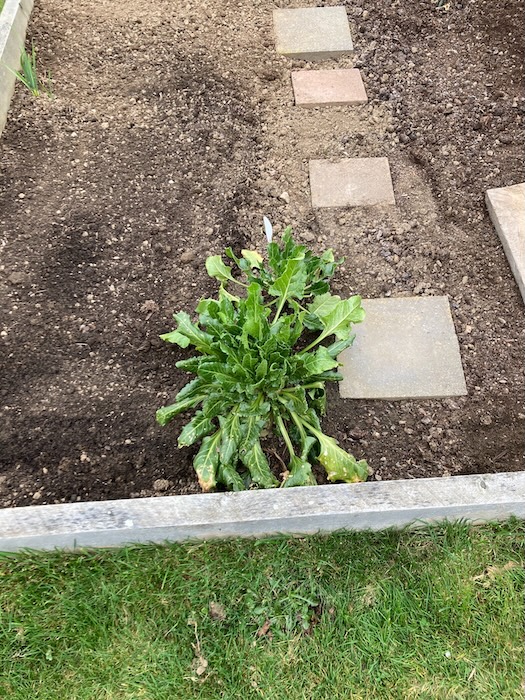
A number of Sugar Beet plants managed to survive the first growing season, including a very cold winter with -6˚C frosts, and then started growing again in their second year. The Sugar Beet plants began bolting over summer, and started flowering in February of 2025. By this time the plants were very tall, about 1.5 m high, and were prone to toppling over in the wind. A number of plant supports were erected to keep the plants upright until the Sugar Beet seeds were ready to be harvested.
In late March 2025 it was finally time to start harvesting the Sugar Beet seeds, and I made the decision to harvest them by hand, picking off each of the seeds one by one as they became brown. This long and drawn out period of harvesting the seeds took around two months, and then once they were nice and dry, I stored them away over this winter.
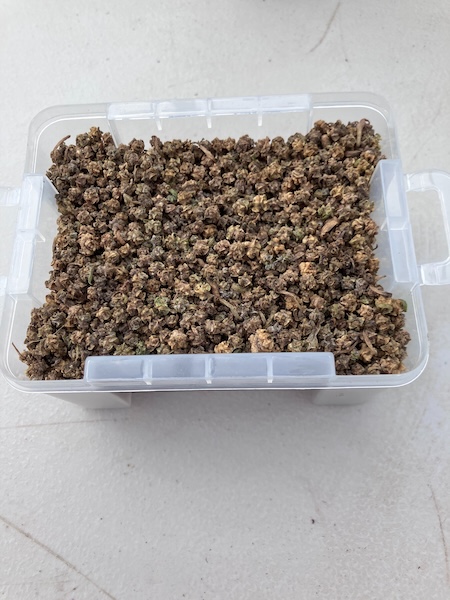
Now I have my own Sugar Beet seeds to use year by year to make my own sugar, and to collect my own seed in Autumn, whenever I need to. And I'm also pleased to say that I have enough Sugar Beet seeds at the moment to sell my excess to other home gardeners through my small business Hearth & Oak. If you are interested in buying some of my Sugar Beet seeds so you can grow your own Sugar Beet, and then collect your own Sugar Beet seeds in the years to come, please follow this Sugar Beet seed packet link to my Felt Store.

I had not intended to use this blog commercially to sell anything through my small business Hearth & Oak, but the thought of home gardeners in New Zealand not having access to Sugar Beet seeds and plants in the coming years, was too much to bear. Rare and interesting seed varieties in New Zealand deserve to be saved, and this is my attempt at doing this for Sugar Beet at least. I hope that if you do buy some of my seeds, my blog posts on Sugar Beet will help you grow your own plants, and then collect seeds, so that you can grow Sugar Beet every year.
Have a wonderful day
Julie-Ann
Want to discuss my post? Feel free to chat with me on Instagram or Mastodon or Bluesky.




